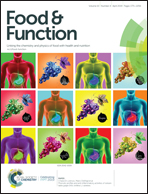Inhibiting the PI3K/AKT/NF-κB signal pathway with nobiletin for attenuating the development of osteoarthritis: in vitro and in vivo studies
Abstract
Osteoarthritis (OA), an age-related degenerative disease, is characterized by progressive degradation of the articular cartilage. There is increasing evidence that nobiletin (NOB) exerts special biological functions in a variety of diseases. However, whether it protects against OA remains unknown. In this study, we investigated the anti-inflammatory and chondroprotective effects of NOB on IL-1β-induced human OA chondrocytes and in the surgical DMM mice OA models. In vitro, NOB treatment completely suppressed the overproduction of pro-inflammatory mediators, including PGE2, NO, COX-2, iNOS, TNF-α and IL-6 in IL-1β-induced human OA chondrocytes. Moreover, NOB exerted a potent inhibitory effect on the expression of MMP-13 and ADAMTS-5 as well as the degradation of aggrecan and collagen-II, which leads to the degradation of the extracellular matrix. Furthermore, NOB dramatically suppressed the IL-1β-stimulated phosphorylation of PI3K/Akt and activation of NF-κB in human OA chondrocytes. In addition, treatment with NOB not only prevented the destruction of cartilage and the thickening of subchondral bone but also relieved synovitis in mice OA models. In conclusion, our study suggests that NOB holds novel therapeutic potential for the treatment of OA.



 Please wait while we load your content...
Please wait while we load your content...